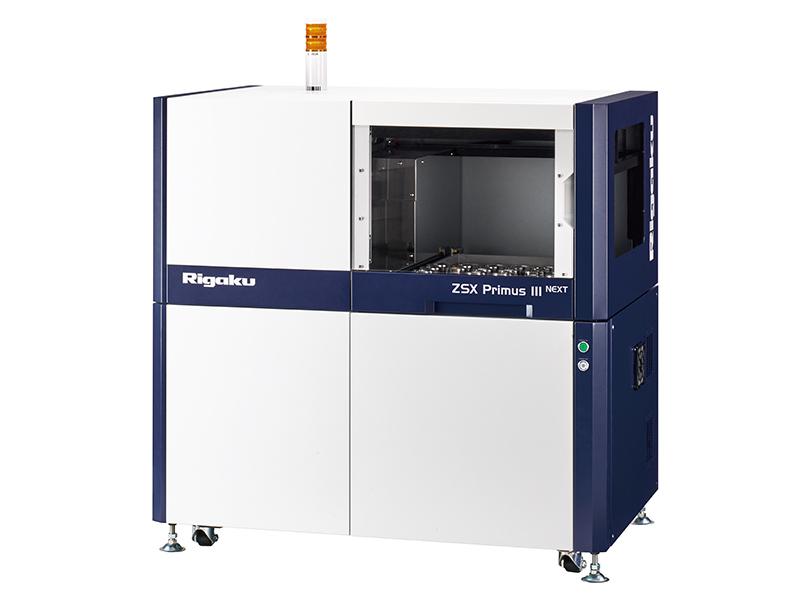ZSX Primus III NEXT
TUBE-ABOVE SEQUENTIAL WAVELENGTH DISPERSIVE X-RAY FLUORESCENCE SPECTROMETER
Rigaku ZSX Primus III NEXT delivers rapid elemental industrial quality control by quantitative determination of major and minor elements from Be through Cm for powder and solid samples.
This new scanning wavelength dispersive X-ray fluorescence spectrometer features Rigaku’s unique X-ray tube-above configuration and is built upon the successful ZSX Primus series platform.

Features
- High-end WDXRF spectrometer for industrial environments
- Increased reliability due to tube-above configuration
- Extended analytical flexibility – ₄Be to ₉₆CM – Full analysis capabilities
- ZSX Guidance software
- High-speed analysis
- Attractive pricing
- Improved service and application support
- Data sharing
Tube above optics for superior reliability
ZSX Primus III Next features an innovative optics-above configuration. Never again worry about a contaminated beam path or down time due to sample chamber maintenance. The optics-above geometry eliminates cleaning worries and increases up time.
High precision sample positioning
The high precision positioning of the sample ensures that the distance between the sample surface and X-ray tube is kept constant. This is important for applications that require high precision, such as the analysis of alloys. ZSX Primus III+ performs high-precision analysis using a unique optical configuration designed to minimize errors caused by non-flat surfaces in samples such as fused beads and pressed pellets
SQX fundamental parameters with EZ-scan software
EZ-scan allows users to analyze unknown samples without any prior setup. This time saving feature requires only a few clicks of the mouse and a sample name to be entered. Combined with SQX fundamental parameters software, it provides the most accurate and rapid XRF results possible. SQX is capable of automatically correcting for all matrix effects, including line overlaps. SQX can also correct for secondary excitation effect by photoelectrons (light and ultra-light elements), varying atmospheres, impurities and different sample sizes. Increased accuracy is achieved using matching library and perfect scan analysis programs.
